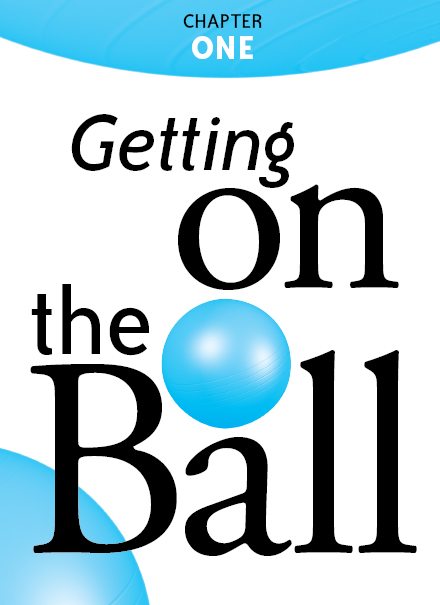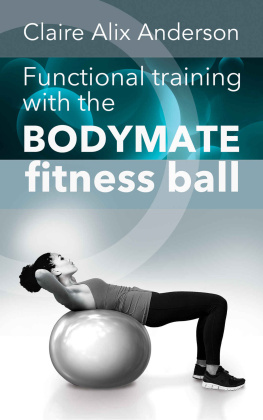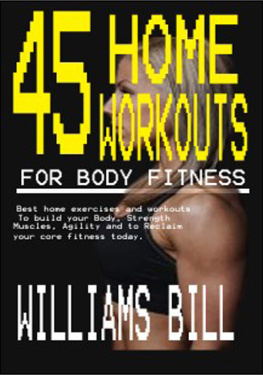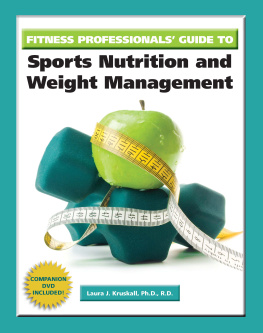Andrews McMeel books are available at quantity discounts with bulk purchase for educational, business, or sales promotional use. For information, please write to: Special Sales Department, Andrews McMeel Publishing, 1130 Walnut Street, Kansas City, Missouri 64106.
Contents


Working on the Ball in a Nutshell
W orking on the Ball throws the acclaimed fitness tool into a new arena: the workplace, where most of us spend most of our time. We provide an innovative and playful approach to fitnessno gym shoes or expensive fitness club memberships required. We dont use lots of fitness jargon and we dont expect you to take yourself too seriously. We want to help you find the strong, sexy, and powerful you. If you do what we tell you to do, you will.
We take you through a full day of exercises to be performed at your desk while using a stability ball as a chair (also referred to as active sitting). We share useful tips for immediate lifestyle improvements to help you make healthy choices at work. And were there with you, on each page, to coach, to demonstrate, and to cheer you on.
Do You Sit at a Computer Most of the Day?
A nyone can deduce that sitting and slouching at a desk all day is hazardous to lower-back health and posture. In addition to making the worst of our nine-to-five activity, it can lead to such physical conditions as kyphosis (rounding of the upper back and shoulders) and lordosis (excessive curvature in the lower back). These conditions contribute to neck pain, headaches, dull lower-back pain, decreased enjoyment of life, and an unattractive appearance. Headaches and lower-back pain (in that order) are the most frequent pain ailments, according to the Mayo Clinic in Rochester, Minnesota. A full 70 percent of the population experiences lower-back pain every year. Even though people blame their workplaces for lower-back pain and all kinds of other ailments, they remain out of touch with what their bodies really need: to eat less and move more.
These conditions are just as bad for business as they are for employees. Work-related back injuries are the most common type of injury, involving the most lost workdays. The trunk, including the shoulder and back, is the body part most affected by work incidents, accounting for 36.5 percent of all 2001 claims (U.S. Bureau of Labor Statistics, 2003).
Meanwhile, growing awareness of the importance of more mindful living has created a huge market for preventative health care, as well as for exercise that is more accessible.
Roughly seventy million Americans use a computer. Theres something mesmerizing about computers. We can sit in the same posture for an hour or two and forget about the passage of time. Computers have changed the nature of our economy and the nature of the way we use our bodies.
You think working on a construction site is dangerous? Working at a computer isnt as safe as you might like to believe. Sitting and slouching at your desk all day will make your job hazardous to good posture and back health.
There are many different possible causes for bad posture, but the most likely is a lack of awareness when sitting at your desk, the place where you spend potentially 40 to 50 percent of your waking hours. You might even be on your way to developing kyphosis or lordosis. In addition, sitting still and not moving all day can lead to excess fat storage and a big flabby butt.
We are a knowledge and information society. Knowledge workers think for a living. But your thinking becomes impaired when you stop moving for prolonged periods. The great news is that being active and working on the ball will pay off not only for your body but for your work as well. If you can keep your body in motion, you can keep your mind in motion.
Working on the Ball Tackles the North American Health Crisis
W hat were going to talk about isnt pretty. If youre not convinced that you need to address your own health and fitness now, this section is very important for you. Even though people are spending more money on gym memberships, fitness books, and exercise equipment, North Americans are getting fatter and fatter. Obesity trends for the United States show a dramatic increase year after year. In 1991, four states reported obesity prevalence rates of 15 to 19 percent and no states reported a rate above 20 percent. In 2002, eighteen states had obesity rates of 15 to 19 percent: Twenty-nine states had rates of 20 to 24 percent and three states had rates over 25 percent. Right now, 64 percent of Americans are overweight or obese. Health complications from obesity and inactivity will soon be the number-one cause of early mortality in America. Clearly, something isnt working.
One of the main reasons for these increases is the environment in which people spend many of their waking hours: work. Work environments provide barriers to opportunity for an active lifestyle (Centers for Disease Control and Prevention, 2002). According to the National Institute for Occupational Safety and Health, seventy million workers in the United States use a computer. The majority of them are in front of the keyboard all day. When theyre not at work, they may be sitting in a car or on a bus or train. Commuters now spend 14 percent more time commuting than they did in 1990, an average increase of more than thirty minutes per day (U.S. Department of Labor, 2003).
The average American spends 1,821 hours working each year. The minimum amount of exercise recommended is 183 hours yearly, or about three and a half hours per week. Fewer than 33 percent of adults engage in the recommended amount of physical activity. And 40 percent of Americans do not participate in any physical activity at all (Surgeon Generals Call to Action to Prevent and Decrease Overweight and Obesity, 2004). Everyone knows they should be physically active on a regular basis, but many say that lack of time is the major impediment. As fitness trainers with corporate experience, we knew what to do. We did a little math. Incorporating those 183 hours into the 1,821 gives people one of the things they most lack. Extra time!
We created Working on the Ball to address this major health crisis in North America, which has come about as a result of working conditions and the general lack of discipline regarding healthy living. Working on the Ball reaches people in the environment they frequent most: the workplace. It provides a means to exercise while doing what we do anyway: sitting. And it removes some of the barriers to health by making exercise and even work more fun.











